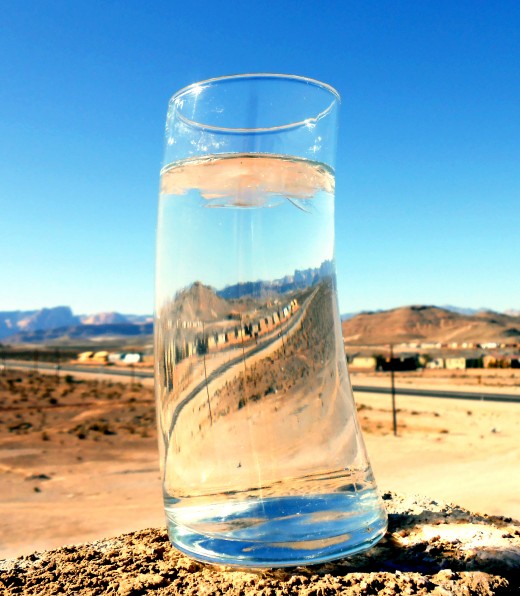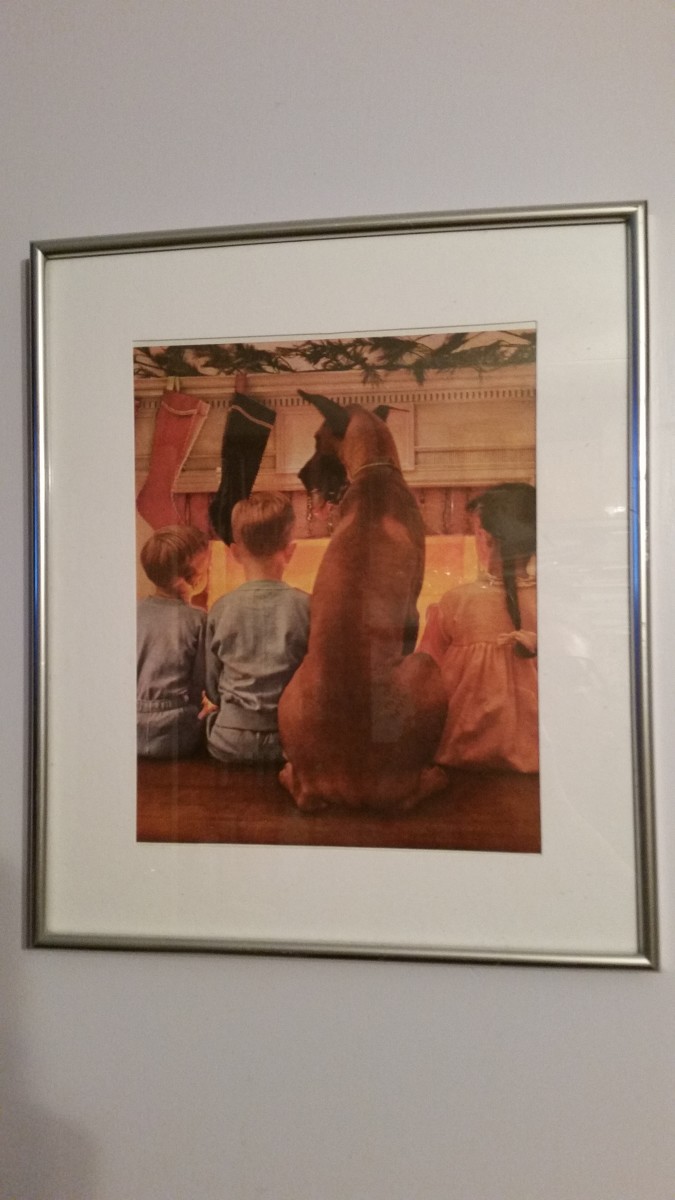- HubPages»
- Home and Garden»
- Home Decorating»
- Wall Decor & Artworks
Fine Art Acrylic (Plexiglass) Prints - The 3-D Effect and a brief History how we got here

From Paper Prints to Fine Art Acrylic Prints
In recent years, fine art acrylic glass prints have become the superior standard for eclectic landscape photographers. For many decades, prints--including Limited Editions--were produced only on paper and this was the industry standard. Paper was inexpensive, easy to print on and transporting them in cardboard tubes was not difficult. For centuries everyone was used to paper as the preferred medium for fine art prints.
Today, it's still the most popular medium for posters and fine art prints in general. After the purchase a buyer of an art photograph has to have the fine art paper print framed just like lithographs from the famous and not so famous artists. And collectors had an easy way to collect a lot of fine art paper prints without framing them and simply storing them away in a very small space.
Artagraphs in the 90's
With advances in print technology we saw the emergence of all kinds of creative new fine art printing techniques. A so-called Artagraph was such an interesting print product in the 90's. One of the artists who made this medium popular was marine artist Christian Riese Lassen. Back then, his Artagraphs sold in his Las Vegas Gallery at the Forum Shops for an average of $6,000 a piece. An Artagraph was a printed canvas with a type of rubber-like gel application on the surface to realistically simulate the look and feel of brush strokes from an oil painting. Therefore, an Artagraph when framed looked very similar to an original oil painting.
Although the company in Ontario, Canada offered flat Artagraph prints too, the magic was in the gel application. This made this particular product more suitable for painters than photographers. It was a great idea, but the drawback was that the original image needed to be scanned to certain standards and best by the Artagraph company itself as today's digital image uploads and the POD (Printing-On-Demand) process were not yet invented.
Therefore, an artist had to carefully choose the image(s) he/she wanted as an Artagraph as due to the printing process with plates, etc. it wasn't feasible to print just one print of an image, but instead an artist had to print a greater number of the same artwork. This was an economic risk which most artists and art publishers were not willing to take.

Why most landscape Photographers choose Fine Art Acrylic Glass Prints
Then with digital photography and additional advances in print technology we finally arrived at the fine art acrylic glass print process. Also, the acrylic (a type of plexiglass) had been advanced and has now become a top quality product. No more yellowing or change in form (like e.g. waves, shrinkage, etc.) over time. As you may have noticed we're not talking about acrylic paint, but acrylic as the type of plexiglass which is also used in framing like for instance as a none-glare "glass" to protect fine art paper prints. Today, we find high-end artwork as acrylic glass fine art prints by e.g. the popular photographer Peter Lik and also by emerging landscape photographers like Bobby Wheat and others.
As is the case with new technologies, there are significant differences in fine art acrylic prints which we'll discuss here briefly in the next paragraph. The magic of acrylic fine art prints is that the artwork looks as if it is somehow illuminated from the inside which then also produces some sort of a 3-D effect. In other words, these acrylic fine art prints just look phenomenal, especially if it is an oversized artwork around 3 ft. x 4 ft. or similar or even a large panoramic artwork. Most artworks on canvas look rather dull in comparison to a fine art acrylic glass print. But fine art acrylic prints are best suited for photographs, especially for colorful photographs, but not for oil paintings or similar art.
Note: Also, the most expensive photograph ever sold so far, "Rhein II" by German artist Andreas Gursky was mounted on Acrylic glass. A few years ago, this particular oversized photograph sold to a high bidder for over $4.3 million at a prestigious art auction.

Differences in Acrylic Art Prints
There are a number of significant differences in fine art acrylic prints. One method is to print a photograph in the traditional way on a high-quality photographic paper. To provide the image with an extra pop and to even get a better 3-D effect, some photographers are now opting for metallic paper. Then the paper is face mounted to the acrylic with a very thin film of adhesive via a heat press. In addition e.g. Peter Lik's artwork receives an additional 1/4" sheet of acrylic as a backing of the photograph so that it is sandwiched between two acrylic sheets. This makes a large artwork a substantial piece and very heavy.
When buyers want to frame the acrylic fine art print then it adds additional weight and cost to the final artwork. But to look at the artwork is truly breathtaking provided that the image is superior of course.
Another process for acrylic art prints is the direct printing onto the back of an acrylic sheet. This method allows the artwork to be placed in rooms that have some moisture like e.g. a bathroom or a pool house. This would not be recommended for acrylic artworks in the previous method as there's a risk that moisture will seep in between the acrylic sheets and perhaps affect the adhesive and/or the paper between the acrylic sheets over time. Also, the face mounting printing process is a bit more work intensive and requires more precision when applying the paper to the acrylic sheet to avoid bubbles, etc.
Direct printing onto the back of the acrylic sheet removes a few steps and therefore reduces some quality risk factors. True, with especially the metallic paper option in the first printing method the visual results for the trained eye might be slightly better than in the second direct onto the acrylic printing process. But a professional interior designer can compensate by proper placement and lighting in the space where the artwork is to be placed.
One other big difference in fine art acrylic prints is the thickness of the acrylic sheet. We've seen very thin acrylic sheets and that's not a good idea. If possible the artist/art photographer and also the art buyer should opt for the thickest acrylic available for an artwork. The standard is a 1/4" and in some rare cases even 1/2". For smaller acrylic print pieces a 1" acrylic block is now also available. The standard 1/4" acrylic sheet is very solid, especially for larger pieces, while a thinner acrylic sheet of e.g. 1/8" does not seem to sustain the stability of the artwork over many decades to come.
Additional stability is provided by the backing of the artwork like in the case of Peter Lik's artwork which uses another acrylic sheet of the same thickness. Others use a blackboard or other products with the same thickness than the acrylic sheet as a sandwich effect and most of these backings are appropriate. The key is to have as a finished product a totally stable artwork that won't bend or change in form over a long period of time. And then there are little technical details as to the finish of the edge of an acrylic sheet and that's when the attention to detail by the artist or art publisher is revealed.
Face mounting method for Acrylic Fine Art Prints

How to hang Fine Art Acrylic Prints
Here we find three options. The first option are four aluminum mounting posts, one on each corner of the artwork penetrating the artwork, to attach the artwork directly to the wall in this way. This is a very contemporary look and may only be suitable for offices and for exceptional contemporary interior design in a home. As a personal preference and considering aesthetics we usually don't like this method as we think it looks kind of industrial. In appearance he artwork becomes like a poster or like an advertisement. Due to the mounting system the artwork is also penetrated by four holes.
The second option is the more traditional one which is e.g. a wooden frame or similar attached to the back of the artwork as a typical float mount. With the second option it will seem as if the artwork is floating on the wall as it is also offset from the wall by approx. 1.5". It looks really cool and it makes the artwork stand out.
Although not necessary, but as we already mentioned, some art buyers opt for the third option to put a frame around fine art acrylic print. Often due to some decorative consideration to be in tune with the overall interior design of the space. Then the fine art acrylic print is hung just like a traditional artwork.
As already mentioned when everything is said and done, an acrylic fine art print can become quite heavy. If weight is an issue than perhaps an aluminum fine art print will be a better choice.
Some considerations regarding Artworks on Acrylic Glass
One tiny problem might be that the glossy finish is reflective like a dimmed mirror when hit directly by a light source. To alleviate light reflections, some photographers offer their artworks on none-glare acrylic, but in our opinion that's not a good idea as it is defeating the purpose of an acrylic print by taking away from the depth of the colors in the artwork and even from the 3-D effect.
Another consideration is weight as fine art acrylic prints can be quite heavy depending on the thickness of the acrylic sheet and the backing used. The third potential problem can occur when the acrylic is scratched by a sharp object. This requires that the acrylic is repaired on the surface which can be a delicate to sometimes a virtually impossible task.
When an acrylic fine art print is dropped, then chipping may occur and that's not a good thing either. As with every artwork of whatever medium, also for fine art acrylic prints special care in handling the artwork should always be a very high priority. Treat every artwork like a rare jewel and it will be preserved for generations to come.
For the photographer price in manufacturing is an issue too as fine art acrylic prints are usually approx. 50% more expensive than e.g. aluminum fine art prints. Also, acrylic fine art prints are frequently more expensive than canvas prints in the manufacturing process. With the benefits and advances of aluminum, although a virtually new product vs. the acrylic fine art print products, we think that aluminum fine art prints are an overall better choice for photographers and buyers as well. But it all depends on individual taste and requirements for a space.

Will Fine Art Acrylic Glass Prints eventually remove Fine Art Paper Prints?
No, not really, because in the first process of producing acrylic fine art prints we mentioned that paper is used as the first step. Also, for those art buyers who cannot afford a fine art acrylic print which often has a price tag of many thousands of dollars (depending on size), the rather affordable paper art prints remain the general standard. Fine art paper prints are still by far the most bought fine art prints in the world today.
Each medium has its segment from the paper art print to the acrylic art print with the newbie the aluminum fine art print, and with canvas prints still flying high. It's good to have diversity of media so that for each taste, budget and decorating need as well as for collectors the proper choice in fine art prints is available.
One crucial Component when purchasing Fine Art Acrylic Prints with thoughts concerning the Investment criteria
We know that most art buyers purchase art for purely decorative reasons and they don't care about a Limited Edition or an Open Edition. Well, decorative items become often worthless over time while genuine fine art pieces have the potential to increase in value. It's almost like buying a genuine Rolex vs. a fake Rolex. One is virtually worthless as low-grade materials are used--although it is fulfilling the purpose of telling time--while the other genuine product will most likely increase in value.
The smart art buyer will always prefer to purchase a Limited Edition fine art print. There's the additional benefit of at least a perceived value and the potential for a value increase in the future. According to NYU economist Nouriel Roubini contemporary art is one of the best investments of our time. Therefore it makes sense and it is affordable to purchase quality fine art prints from select artists including emerging artist as a Limited Edition print or even better as an Artist Proof.
We can't say it often enough that when purchasing a Limited Edition fine art print and if there's a choice it's often a good idea to opt for the Limited Edition that has the lowest issue number. A fine art acrylic glass print from a Limited Edition of 1,000 may not be as valuable as a Limited Edition with only 10, 20 or perhaps a max of 50 in its availability. Of course, the current and future value of an artwork will depend to a great part on who the artist is now and how he/she will be recognized in the future. That's when the speculative factor comes into play. Most importantly the artwork itself must appeal to and must be appreciated by the art buyer as he/she will have to live with it for many years to come.

© 2014 Dietmar Scherf







